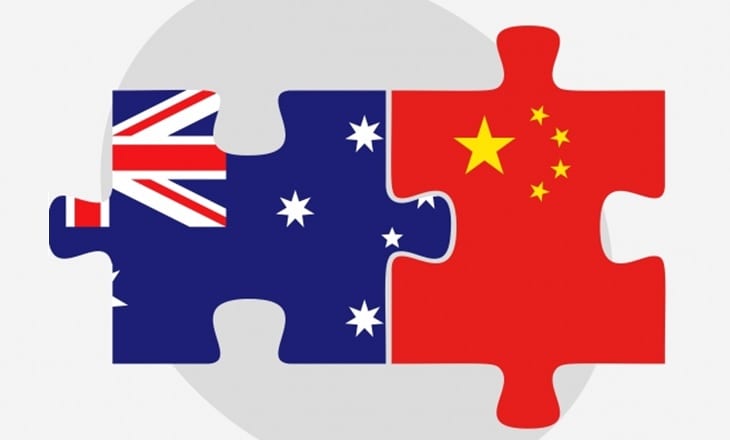The following article was written by Ipek Ozkardeskaya, Senior Market Analyst at FCA regulated broker London Capital Group Holdings plc (LON:LCG).

Ipek Ozkardeskaya, LCG
The Australian dollar is recognized as the best proxy for trading the Chinese economy, as the Chinese Yuan is not freely traded.
The Reserve Bank of Australia’s (RBA) former Governor Glenn Stevens has said in an interview given in 2011, that the Australian economy is so reliant on Chinese growth that ‘even a pet shop’s talking birds can recite trade patterns’.
He wasn’t all wrong.
Over the ten year to 2014, Australian exports to China have been multiplied by nearly eight times, as the double digit growth figures in China translated into an immense demand for Australian commodities.
The rising exports pattern was interrupted by the Chinese slowdown story and resulted in a 27% slump in 2015. Exports recovered by 7.6% over the following year.
In 2016, China stood for more than 40% of Australia’s exports.
Although Australia is making efforts to shift its economy from mining to construction sector, the Aussie is still highly dependent on Chinese data.
Hence, China and Aussie have good friends in common, the commodity markets.
China’s ‘Belt and Road’ has been an energy boost to the Aussie
By the beginning of May, China’s Belt and Road initiative hit the global headlines as the emerging market giant pledged to invest an additional 540 billion yuan ($78 billion) in infrastructure spending to boost growth in its peripheral provinces, to increase its global influence, to stabilize the yuan and to temper the capital outflows. The additional spending would feed into the Silk Road Fund (100 billion yuan), loans from policy banks (380 billion yuan) and emerging economies and international organisations (60 billion yuan).
Some believe that China also had a hidden will: to drain its massive commodity piles. The truth is the ‘project of the century’ should sustain the global commodity prices; it doesn’t matter if a part of the demand is satisfied by already existing stockpiles.
Although the commodity prices didn’t give an immediate positive reaction to China’s plans, iron ore and copper futures bottomed in May and a recovery could be imminent.
Aussie gained 2.5% in May
The Aussie made an unexpected U-turn at the beginning of May and recovered by 2.5% against the US dollar.
At 0.7540, the AUDUSD would’ve retraced the half of losses recorded between March and May.
The key resistance stands at 0.7588 (major 61.8% retrace on March – May decline), if surpassed, would provide the Aussie-bulls a stronger conviction for an advance toward the first quarter’s reflation rally peak, 0.7748.
Downside risks to May pick-up
The major downside risks to the current positive trend is the lack of momentum in the Chinese Belt and Road project and a further deflation in the commodity prices.
Moody’s has recently downgraded the Chinese debt from A1 to Aa3. News prevented the Aussie from building on its gains beyond the 200-day moving average. A failure to clear the 0.7540 resistance would keep the AUDUSD in the broad downtrend pattern against the US dollar and signal a renewed weakness toward 0.7330/0.7300 area.
